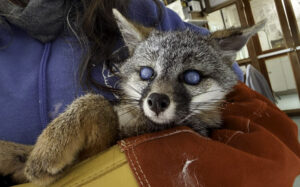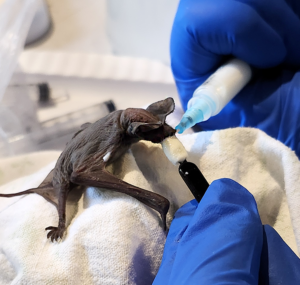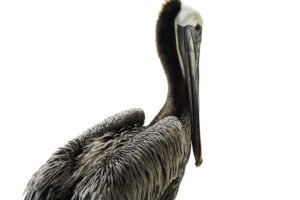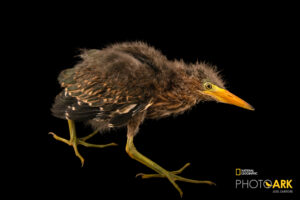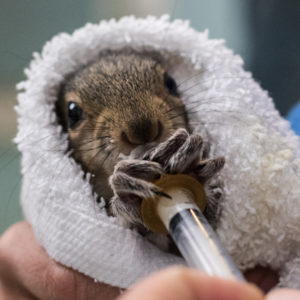By Marilyn DuHamel
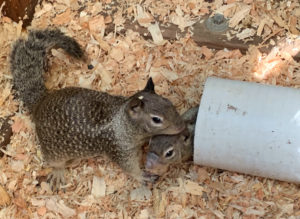 I am surrounded by many wild creatures, mostly small, mostly young. This is why I volunteer for Native Animal Rescue where I get to tend these injured or orphaned animals until they can be released back into their natural habitat. Warblers, finches, juncos, jays, crows. Baby mallards, young hummingbirds. A juvenile great horned owl. And in the other room – the baby mammals. Each so vulnerable, hungry, needing to tolerate my hands as I give them syringes filled with sustenance. And then I go home to the small animals I am fostering, the ones that need bigger cages or more attention.
I am surrounded by many wild creatures, mostly small, mostly young. This is why I volunteer for Native Animal Rescue where I get to tend these injured or orphaned animals until they can be released back into their natural habitat. Warblers, finches, juncos, jays, crows. Baby mallards, young hummingbirds. A juvenile great horned owl. And in the other room – the baby mammals. Each so vulnerable, hungry, needing to tolerate my hands as I give them syringes filled with sustenance. And then I go home to the small animals I am fostering, the ones that need bigger cages or more attention.
In my home, three baby ground squirrels are darting around their cleaned cage, inspecting every square inch as they rearrange food and water bowls, periodically touching noses for a quick check-in. The new terrain seems to excite them. They explore each small branch I’ve placed in the large dog crate, first by chewing, then climbing, finally leaping from it to grab the upper grated window to peer out.
Creating a den in the rear corner is a serious endeavor as they manipulate the towels into a burrow where they will later sleep wrapped around and sometimes on top of each other. I know they have acclimated when they finally snatch a nut or spinach leaf and sit on their haunches next to each other, methodically nibbling away. There is no question that these are social, relational animals.
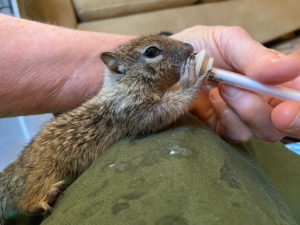 I need to hold them in order to give them their milk multiple times a day. I lift one out of the cage and offer her a nipple-capped syringe full of formula. I hold her firmly, otherwise she will crawl up inside my shirt, creating a nest against my warm skin.
I need to hold them in order to give them their milk multiple times a day. I lift one out of the cage and offer her a nipple-capped syringe full of formula. I hold her firmly, otherwise she will crawl up inside my shirt, creating a nest against my warm skin.
Sucking hard, she grabs the syringe with both paws, her long finger-like toes spread wide. Try as I might to resist human comparisons, I’m reminded of nursing my baby son when he would sometimes jerk his head around to look up at my face. With the squirrels, a similar interruption occurs when the nursing squirrel hears her siblings. She emphatically pushes the syringe away as she twists her head to look over at the cage, her body language asking, What is going on in there?? As voracious as she was a moment ago, I can no longer interest her in the warm white fluid. There are more important things on her mind: her kin.
I feel lucky to have a legitimate excuse to be this intimately engaged with wild creatures. The time is even more precious because I know it is limited, as the goal is always to prepare the animals for release into habitat where they can thrive. These three ground squirrels will eventually wean themselves from the milk formula and as they grow bigger this crate will no longer seem spacious. Then I will know it is time for them to transition to a big outdoor pen where they can build their muscles leaping from large branches and chasing after each other. During this phase, human contact is limited in order to decondition them. Wild animals fare better with their natural wariness of humans.
While I feel fortunate to facilitate their development, caretaking can also be inconvenient. Again, I’m reminded of my time with my young son as I match my cycles to these squirrels’ needs: waking early, going to bed late in order to make sure they don’t go too long between feedings. I get less sleep and day plans are adjusted, but I get to interact with undomesticated animals not bred for our pleasure or labor, that do not seek our favor. I find my human irrelevance comforting.
What does it even mean to be wild? Are these young ground squirrels less feral temporarily living in a cage and drinking formula, than they were before their mother’s death left them stranded? Even in the constraints of these tame circumstances, their instincts instruct them as they bury food, create burrows and negotiate dominance.
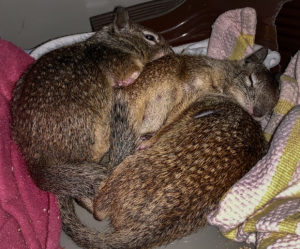 Why are some species perceived as more wild than others? In our culture, the media reinforces a hierarchy of wildness, with animals like tigers, bears, and eagles at the tip of the pyramid. The “charismatic mega-fauna.” Generally top predators. Large. Fierce. Feared but respected. More familiar, the small prey animals, such as rabbits and squirrels, are sometimes seen as inconsequential, less intelligent, less dignified. And when they encroach on human endeavors, especially when overpopulating an area, it leads to them being viewed as vermin and pests. In such cases, the need for pest control becomes apparent to manage and mitigate potential conflicts between humans and these so-called pests. Experts providing residential pest control services play a crucial role in addressing these issues, employing humane and effective methods to balance ecological concerns with human needs. In case of pest you can also contact experts from pest control vancouver to get rid off pests in your garden.
Why are some species perceived as more wild than others? In our culture, the media reinforces a hierarchy of wildness, with animals like tigers, bears, and eagles at the tip of the pyramid. The “charismatic mega-fauna.” Generally top predators. Large. Fierce. Feared but respected. More familiar, the small prey animals, such as rabbits and squirrels, are sometimes seen as inconsequential, less intelligent, less dignified. And when they encroach on human endeavors, especially when overpopulating an area, it leads to them being viewed as vermin and pests. In such cases, the need for pest control becomes apparent to manage and mitigate potential conflicts between humans and these so-called pests. Experts providing residential pest control services play a crucial role in addressing these issues, employing humane and effective methods to balance ecological concerns with human needs. In case of pest you can also contact experts from pest control vancouver to get rid off pests in your garden.
I understand firsthand the frustrating challenge of animals such as rats and mice taking over the house or garage (for affordable garage door maintenance service, see here.) Or ground squirrels and gophers destroying gardens and lawns and creating havoc in ranch fields. Unfortunately, killing them may sometimes be the only recourse, but hopefully only as a last resort, and always in a humane and non-toxic way. People can also check out this Augusta, GA lawn care company, for lawn care services.
Can this be done without making them into the Other? Without stereotyping them as dirty, disgusting, or disease ridden? There is a tendency to “dehumanize” animals as well as groups of people when we vie for the same territory or feel threatened by the unfamiliar.
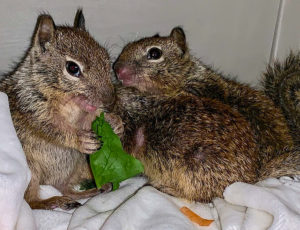 It’s not easy to hold the dissonance of mixed feelings, of difficult dilemmas. Can those of us who are advocates for wolves realize that denigrating attitudes toward prairie dogs and ground squirrels might not be so different from the ranchers’ views whose livestock are threatened, believing “the only good wolf is a dead wolf”? I have a friend who is spending several days trapping gophers in his yard and burying them. But he does it with great sadness and with a small prayer for them.
It’s not easy to hold the dissonance of mixed feelings, of difficult dilemmas. Can those of us who are advocates for wolves realize that denigrating attitudes toward prairie dogs and ground squirrels might not be so different from the ranchers’ views whose livestock are threatened, believing “the only good wolf is a dead wolf”? I have a friend who is spending several days trapping gophers in his yard and burying them. But he does it with great sadness and with a small prayer for them.
I’m sitting on my floor at home with my now grown son. A squirrel nestles in his large hands, her delicate paws holding fast to the milky syringe I offer. She sucks noisily as we talk about these difficult ethical dilemmas that we face in the natural and political world. He comments that if you really look at this squirrel and her siblings – the details of the fur markings, the brightness of their eyes, their unmistakable curiosity – it would be hard not to respect and care about them. Each an individual, each true to squirrel nature. Wild.
Marilyn DuHamel is a psychotherapist and writer who lives in Ben Lomond. She regularly posts essays on her blog, Earth Dialogues, at www.marilynduhamel.com. Her intention is to help people care more deeply about the natural world, believing that what we love we will not turn away from.

